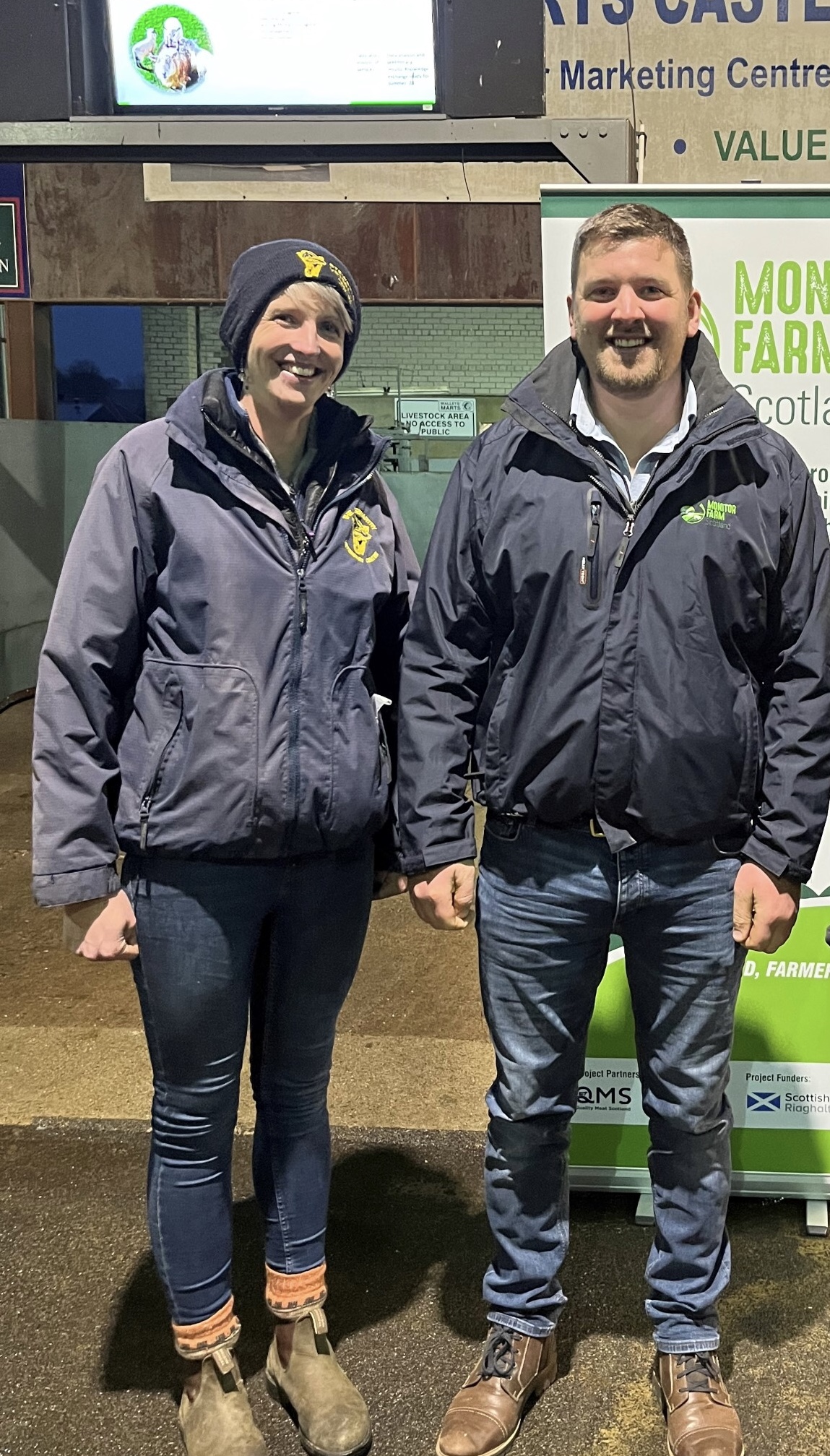Sheep producers are being urged to check their ewes’ Body Condition Score (BCS) now and to take action to ensure they are at BCS 3-3.5 before tupping, or 2.5 in a hill flock.
The advice comes from Ali Haggerty, a vet with Stewartry Veterinary Centre, who warns that the difficult spring and summer could impact both next year’s lambing and subsequent lamb performance if ewes are too thin.
At a recent meeting at the Dumfries Monitor Farm, she advised farmers to condition score ewes now if they hadn’t already done so, and to think about how much condition they would need to gain to achieve target BCS before tupping.
“Increasing BCS by one score – so, say, from BCS 2 to 3 – is equivalent to about 10-12% of the ewe’s mature bodyweight. So, for a 70kg ewe, that’s 7-8.4kg. How many days do you have before tupping to achieve that BCS?”
Ali said: “Ewes can gain 0.5 BCS in around four weeks from good quality grazing. At Barnbackle, lambs have been weaned in early July, but there is a focus now on increasing ewe BCS before lambing. We’re looking to achieve greater than 80% of the flock to be at the desired BCS at tupping.”
The need to achieve target BCS before tupping is being driven by findings from an ongoing project at Barnbackle. Richard McCornick and his family, who run the 200ha (500-acre) beef and sheep unit are expanding their flock, so there is a particular focus on improving performance.
The project is looking at factors affecting colostrum quality and lamb survival. At lambing this year colostrum was sampled pre-suckling and tested for antibody concentration and bacterial contamination. A cohort of lambs were then blood sampled 48 hours after colostrum ingestion to assess passive immunity. As part of the project, all ewes have been condition scored at key times.
The collaborative project between Monitor Farm Scotland, Livestock Health Scotland and run by The Stewartry Veterinary Centre and University of Glasgow, involves a holistic approach, said vet and researcher Ali, who is Barnbackle’s vet. The ultimate aim of the project is simple; to increase lamb neonatal survival rates, leading to more lambs for sale, she said.
While Ali cautioned that the study is only a snapshot in time on one farm, she said there are some key areas of focus.
“Low maternal BCS at lambing led to poorer quality colostrum being produced. It is also associated with lighter lambs, which had reduced survivability, body temperature regulation and ability to get up and sucking. These ewes also had reduced mothering ability and bonding with their lambs, especially outside. In this case study, we found a positive association between colostrum antibody and lamb serum antibody. Every unit increase in colostrum quality increased lamb antibody levels, boosting immunity and reducing disease and mortality.”
With grass growth being variable in many areas this spring and summer, condition scoring and taking action now is vital. “In a season like this, many ewes will not have recovered from lambing as well as usual, so it is critical to think about what you are putting in front of ewes now so you are not impacting the next crop; don’t perpetuate a vicious cycle of poor performance.”
Project collaborators
Barnbackle is one of nine Monitor Farms across Scotland taking part in the Monitor Farm programme run by Quality Meat Scotland and AHDB and funded by Scottish Government. This aims to help farms reach full economic, social, and environmental sustainability by optimising production. Over the four-year project, other farmers and experts will be brought together to help the businesses assess farm performance, explore opportunities, and develop solutions to their challenges.
Livestock Health Scotland (LHS) is a ‘not for profit’ producer-led organisation focused on building the health and welfare status of Scottish livestock. It aims to work in partnership with livestock producers and farm vets to achieve this, and also aims to be a bridge between researchers, systems experts and those operating at farm business level, creating a pathway for innovation.
LHS’s activities include: Maintaining active two-way communication with producers and farm vets; providing information and technical guidance in collaboration with expert groups; supporting smarter disease management strategies at farm and national level, through biosecurity, health screening, vaccine programmes and responsible use of medicines, and; providing a pathway for innovation, data capture and adoption of best practice.

